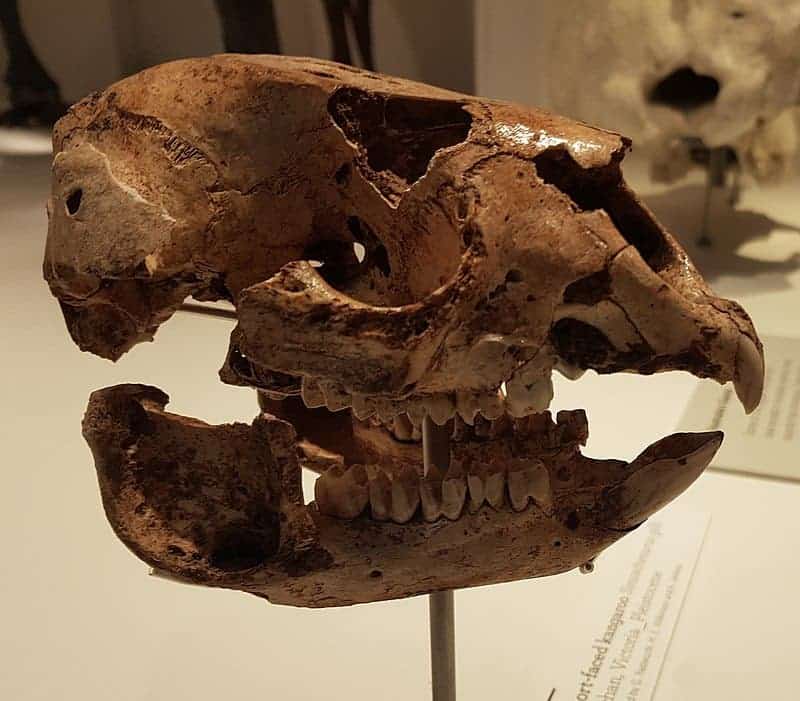Australia’s extinct short-faced kangaroos were more like marsupial giant pandas, new research reports.

The animals were massively thickset, with the largest species weighing more than 220 kg and had large heads shaped like a koala’s. Their jaws were also adapted to local vegetation, which was predominantly woody and relatively poor-quality in Ice Age Australia.
Ancient panda
“The skull of the extinct kangaroo studied here differs from those of today’s kangaroos in many of the ways a giant panda’s skull differs from other bears,” says Dr. Rex Mitchell, a researcher with Australia’s University of New England (UNE) and the University of Arkansas and the sole author of the paper.
“It makes sense that the strange skull of this kangaroo was, functionally speaking, less like a modern-day kangaroo’s and more like a giant panda’s.”
The study finds that the skull of one species of these extinct kangaroos was tailored for crushing of food, which would make it useful for animals trying to make ends meet in low-productivity landscapes (as it allows them to eat basically any plant matter). Adaptations for this role include “enormous cheekbones and wide foreheads”, Dr. Mitchell explains, as well as an overall increase in the skull’s size.
He also explains that what we’re seeing isn’t a fluke of biology, but a deliberate change. It would take a lot of energy and nutrients to grow and maintain that bone, so “it follows that it wouldn’t have evolved unless [the kangaroos] really needed it to bite hard into at least some more resistant foods that were important in their diets.”
For the study, Dr. Mitchell created three-dimensional models from scans of a well-represented species of short-faced kangaroo, Simosthenurus occidentalis. This species is estimated to have lived up to 42,000 years ago and grow up to 120 kg in adulthood. Using the models, Mitchell examined the biomechanical performance of the skull’s bites and compared them to koalas, which have a similar skull shape.
Based on the skulls’ structure, Dr. Mitchell estimates that the short-faced kangaroo was much more vulnerable to injury than today’s koalas when biting with their back teeth. However, he also says that this risk would be greatly reduced if a muscle located on the inner surface of the kangaroo’s cheekbones was enlarged. That feature — the enlarged muscle — is seen on the giant panda, who feeds on thick and resilient bamboo.
The short-faced kangaroo model could also withstand twisting of the skull much more effectively than that of a koala during hard biting on one side of the mouth. This supports the view that the toughest vegetation it could eat — such as the woody twigs and branches of trees and shrubs — may have been fed directly to its premolars and molars to be crushed or otherwise broken apart (similar to how giant pandas chew bamboo).
“The skull of the extinct kangaroo studied here differs from those of today’s kangaroos in many of the ways a giant panda’s skull differs from other bears,” says Dr. Mitchell. “It makes sense that the strange skull of this kangaroo was, functionally speaking, less like a modern-day kangaroo’s and more like a giant panda’s.”
The paper “The anatomy of a crushing bite: the specialised cranial mechanics of a giant extinct kangaroo” has been published in the journal PLOS ONE.






